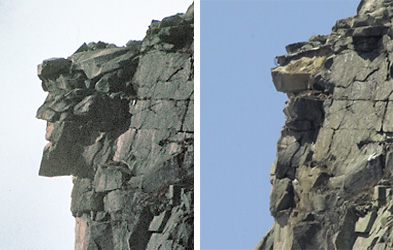White Mountains are part of the Appalachian Mountain system. They stretch from western Maine across north-central New Hampshire. The mountains received their name because many high peaks are treeless and appear remarkably white when covered with snow. The whiteness becomes very impressive in the spring and fall when snow does not cover the lower elevations.

The White Mountains cover about 1,000 square miles (2,590 square kilometers). The terrain is rugged and heavily forested. Most of the area is in the White Mountain National Forest. The natural beauty of the region draws many summer tourists, and heavy winter snowfall provides excellent skiing.

The mountains include a number of ranges. The most famous is the Presidential Range, which has the highest peaks in New England. Eight of the 86 peaks in this range bear the names of United States presidents—Adams, Eisenhower, Jackson, Jefferson, Madison, Monroe, Pierce, and Washington. Mount Washington is the highest peak in the northeastern United States. It has an elevation of 6,288 feet (1,917 meters).
Glaciers deepened a number of passes, known as “notches.” Cannon Mountain in Franconia Notch once included a famous New Hampshire landmark—the Old Man of the Mountain, or Great Stone Face. Erosion had carved the profile of a man’s face on a cliff there. But the rock formation fell away in 2003. 
Mount Washington is famous for extreme and rapidly changing weather conditions. The Mount Washington Observatory there keeps daily weather records. On April 12, 1934, the observatory recorded a wind of 231 miles (372 kilometers) per hour, the highest wind speed ever recorded in the United States.
See also Mount Washington.
